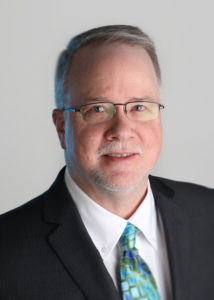
Long-term care providers could meet an “active policy environment” next year as the presidential election process unfolds, according to one expert.
The Centers for Medicare & Medicaid Services has made it clear about where it wants to take the federal programs in the future, and this has resulted in the agency putting out a host of rules and regulations over the last year, Brian Ellsworth, Health Dimension Group’s vice president of public policy and payment transformation, told McKnight’s.
As the 2020 election unfolds, Ellsworth said providers should expect the agency’s continued push toward supplying consumers with more information in order to drive quality, and more policy debates. “It’s certainly been an active policy environment over the last year. With next year being an election year, it may well still be a fairly active environment, as well,” Ellsworth said.
“This administration has really clearly articulated that they want to see efforts at making markets work more efficiently, driving quality through the sharing of information and continued growth in alternative payment models,” he added.
Interpretive guidance

Providers can also look forward to the much-awaited interpretive guidance on Phase 3 of the Requirements of Participation, which is expected to arrive during the late spring, according to Ellsworth.
“We’re certainly expecting Phase 3 of the ‘mega rule,’ [to be finalized],” he said. “For the other aspects of Phase 3 that weren’t proposed to be changed, we’re waiting for the interpretive guidance and the training of the surveyors, which I’m told is going to happen in the second quarter of 2020. There will definitely be more to come on Phase 3 of the ‘Mega Rule’ in terms of its implementation.”
He specifically called on providers to closely analyze guidance on the newly implemented hospital discharge planning regulations, which has the potential to “be a big deal over time.”
“The big aspect of those rules that’s going to change things is that hospitals are required to use and share quality and resource use data on hospital discharges requiring post-acute care,” Ellsworth said.
“That’s going to potentially be a big deal over time as the rules of the road get made clear on that. CMS is really envisioning that hospitals will be pointing patients in the direction of the [Nursing Home] Compare sites and star ratings,” he added.
That change could be “major” for providers now that CMS is “moving in the direction of franchising patients with information and decision making powers in order to drive quality,” he explained.
More scrutiny of the Patient-Driven Payment Model
Though providers have seen initial success under the new Patient-Driven Payment Model, which went into effect Oct. 1, Ellsworth noted that could change as regulators begin to examine the effects of the regulation more closely.
“For PDPM, we’re certainly going to see facilities really making the pivot towards looking at their performance, their coding, their clinical documentation, their therapy utilization, and looking at increasingly medically complex admissions,” Ellsworth said.
“At the same time, there will be increased scrutiny of providers’ operating margins under Medicare. It remains to be seen how that will all play out, but it is quite possible facilities will initially be very successful under PDPM. Then there will come some challenges as the regulators and the payers scrutinize that more.”
Strategies for success
To prepare for this change, Ellsworth suggested that providers ensure their publicly reported metrics are “as good as they can be.”
Strategies for success include: conducting prep surveys to ensure facilities are inline with new standards and current surveying trends, and ensuring their operational performance is up to par. He added that strong performance measures translate into good quality metrics and high star ratings.
“Facilities would be well-advised to make sure that all of those metrics are in as good as shape as possible by really driving their operational performance,” Ellsworth said.





